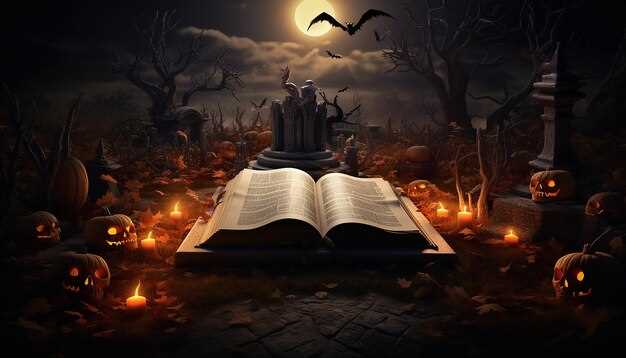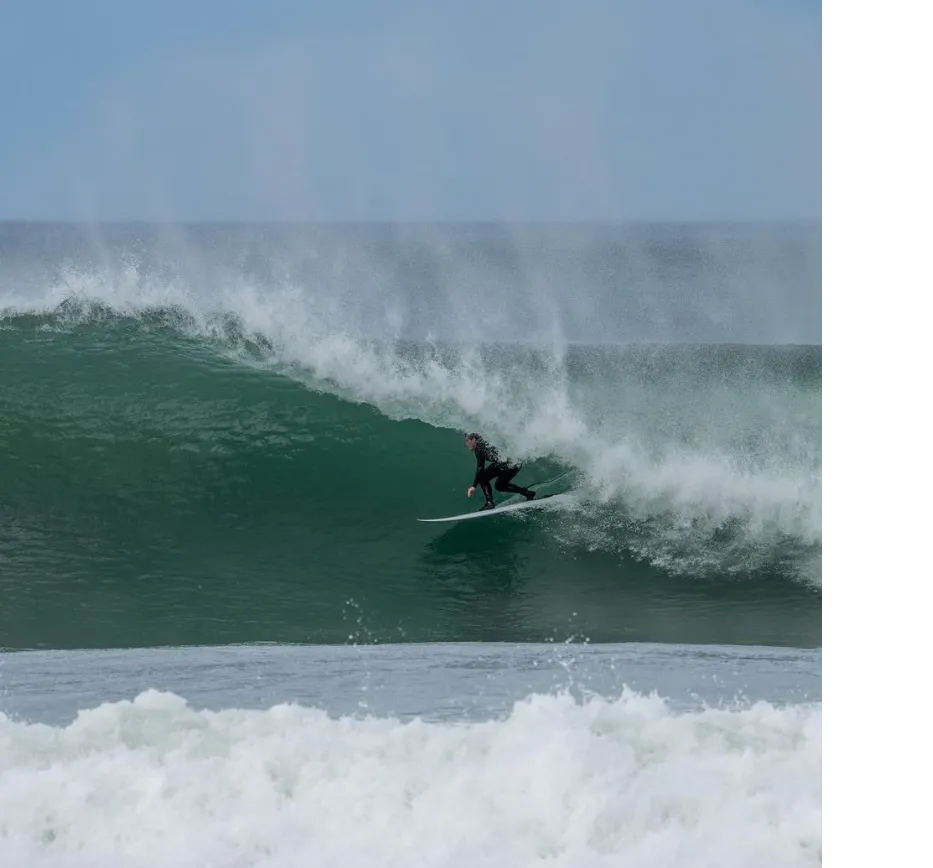
As human beings, we have always been fascinated by stories that elicit a sense of fear and apprehension. From the earliest days of humanity, individuals have sought solace in sharing the darkness of the unknown through various forms of storytelling. It is within the realm of horror literature that we find the embodiment of our deepest fears and desires, captured in words that evoke powerful emotions and ignite our imaginations.
Throughout the ages, authors have taken up the mantle of guiding us through the treacherous landscapes of the human psyche. From the obscure corners of Victorian Gothic novels to the heart-pounding pursuits of modern thrillers, the genre of horror literature has undergone a remarkable metamorphosis. It is an evolution marked by ingenuity, imagination, and a deep understanding of the human condition.
At its core, horror literature serves as a reflection of society and the fears that dwell within our collective unconscious. It invites readers to confront their inner demons, exploring themes of mortality, the supernatural, and the macabre. Whether through the use of supernatural beings, psychological terror, or spine-chilling suspense, writers have crafted tales that resonate with readers on a primal level, tapping into our most primal instincts and fears.
While the term “horror literature” may conjure images of blood-soaked pages and grotesque creatures, the genre encompasses a vast array of styles and narratives. From classic horror novels that delve deep into the psyche of their characters to pulse-pounding suspense stories that keep us on the edge of our seats, horror literature continues to push the boundaries of what is considered frightening. It challenges us to confront the darkness that dwells within us all, offering a unique and often exhilarating reading experience that transcends the boundaries of time and culture.
Gothic Literature: Birth of Horror
The emergence of Gothic literature marked a pivotal moment in the development of the dark and macabre genres. This literary movement, characterized by its eerie atmospheres, supernatural elements, and haunted settings, paved the way for the birth of horror as we know it today. By exploring the depths of human fear, Gothic literature changed the landscape of storytelling and ignited a fascination with the unknown and the monstrous.
The Origins of Gothic Literature
Gothic literature first emerged in the late 18th century as a reaction against the rationalism and enlightenment philosophy that dominated the time. It can be seen as a rebellion against the restricted social norms and the suppression of individual desires. The genre drew inspiration from medieval settings, medieval architecture, and the mysterious allure of supernatural phenomena. Gothic literature delved into the depths of human psyche, unveiling hidden fears, desires, and anxieties.
The Key Themes and Elements
- Gothic literature often featured decaying and claustrophobic settings, such as castles, mansions, and monasteries, which served as powerful symbols of oppression and confinement.
- Supernatural elements, including ghosts, vampires, and werewolves, were skillfully interwoven into the narratives, blurring the line between reality and the supernatural.
- The exploration of the taboo and forbidden was another common theme in Gothic literature. It delved into themes of madness, obsession, and sexuality, often challenging societal norms and expectations.
- The use of suspense and tension was paramount in Gothic tales, keeping readers on the edge of their seats with the anticipation of impending doom and terrifying encounters.
Gothic literature laid the foundation for the horror genre, inspiring countless authors to continue pushing the boundaries of fear and imagination. It fuelled the collective fascination with the macabre, the unknown, and the uncanny. From the classic tales of Edgar Allan Poe to the modern psychological thrillers, the influence of Gothic literature can still be felt in contemporary horror storytelling.
Classic Horror Authors: Masters of Fear
In the realm of chilling tales and spine-tingling narratives, a select group of gifted writers have emerged as masters of fear. These literary maestros have crafted timeless works that have captivated readers throughout the ages, leaving an indelible mark on the genre. Their ability to evoke terror, explore the darker realms of the human psyche, and infuse their stories with haunting imagery is unparalleled.
Each of these exceptional authors possesses a unique style and perspective, using their words to weave intricate webs of suspense and dread. From the gothic hauntings of Edgar Allan Poe to the psychological depths of Shirley Jackson’s narratives, their works have become literary benchmarks for horror enthusiasts and aficionados alike.
The Unsettling Genius of Edgar Allan Poe
Edgar Allan Poe, a literary pioneer of horror, embraced the macabre and the psychological aspects of fear. His tales of terror, such as “The Tell-Tale Heart” and “The Fall of the House of Usher,” lure readers into a world of madness and desperation. Poe’s ability to create an atmosphere of impending doom, combined with his intricate storytelling and penetrating insight into the human mind, have cemented his status as a true master of the genre.
Shirley Jackson: Exploring the Darkness within
Shirley Jackson, a master of psychological horror, delved into the inner workings of the human psyche, unraveling the complexities of fear and dread. Her haunting masterpiece “The Haunting of Hill House” skillfully blurs the line between the supernatural and the psychological, leaving readers questioning their own perceptions of reality. Jackson’s ability to build suspense and create a sense of unease through her nuanced characters and atmospheric settings sets her apart as a true genius of the craft.
These legendary authors, among others, have shaped the landscape of horror literature, providing readers with stories that continue to send shivers down their spines. Their legacy serves as a reminder of the enduring power and allure of well-crafted tales of terror.
The Rise of Victorian Sensationalism in Horror
Exploring the development of horror literature during the Victorian era unveils a significant shift towards sensationalism, where authors sought to captivate readers with thrilling and shocking narratives. This period witnessed a departure from the more traditional gothic tales of the past, embracing a new style of storytelling that evoked intense emotions and appealed to a wider audience.
One of the defining characteristics of Victorian sensationalism was its ability to instill a sense of fear and curiosity in readers through the incorporation of vivid descriptions and suspenseful plotlines. Writers skillfully exploited the fears and anxieties prevalent in society at the time, such as technological advancements, societal changes, and moral dilemmas, to create a heightened sense of tension and intrigue.
The Power of Sensational Descriptions
Authors of Victorian horror literature utilized the power of vivid descriptions to immerse readers in a world of darkness and terror. Through meticulous attention to detail, they crafted scenes that painted haunting images in readers’ minds, eliciting a visceral response. By doing so, they were able to heighten the overall impact of their narratives and leave a lasting impression on their audiences.
Additionally, the use of sensory language, including visual, auditory, and tactile descriptions, gave readers a multifaceted experience, allowing them to vicariously live through the characters’ terrifying encounters. This level of engagement further intensified the emotional impact of the stories and made them all the more memorable.
Moral Ambiguity and Psychological Depth
Victorian sensationalism in horror literature was characterized by its exploration of moral ambiguity and psychological depth. Unlike the clear-cut distinctions between good and evil found in gothic tales, these narratives delved into the complexities of human nature, presenting flawed characters with questionable intentions and motivations.
By challenging societal norms and expectations, authors pushed the boundaries of conventional storytelling, providing readers with a deeper understanding of the human psyche. This newfound exploration of psychological depths added another layer of intrigue to Victorian horror literature, captivating readers with the complexities of the human condition and leaving them pondering the blurred lines between right and wrong.
In conclusion, the rise of Victorian sensationalism in horror literature marked a significant departure from traditional gothic tales, embracing a style that evoked intense emotions and captivated readers through vivid descriptions, moral ambiguity, and psychological depth. This shift paved the way for the modern thrillers we enjoy today, showcasing the enduring appeal of this era’s contribution to the evolution of the genre.
Psychological Horror: Unleashing Inner Demons
The exploration of the human psyche has been a transformative and captivating element within the realm of terrifying narratives. By delving into the murky depths of the mind, authors have crafted stories that pull at the strings of our innermost fears, unearthing the dormant demons that haunt our subconsciousness.
Evolution of Horror Themes: Beyond the Supernatural
In the realm of eerie narratives, a perpetual transformation can be observed when exploring the vast expanse of macabre literature. While the origins of horror stories lie in Gothic tales, the genre has evolved over time, delving into realms beyond the supernatural. This article explores the progression of horror themes, moving beyond the confines of common mortal fears, to delve into the terrifying unknown that lies beyond our earthly understanding.
As we traverse the annals of horror literature, we witness a shift from the conventional tropes of haunted houses, ghosts, and monsters. While these elements still hold their charm, modern horror writers have ventured into uncharted territory, captivating audiences with existential fear, psychological horrors, and the exploration of cosmic dread.
- Existential Fear: In the evolution of horror themes, authors have begun to delve into the innermost fears nestled deep within the human psyche. The idea of one’s existence being meaningless and absurd can now be found, immersing readers in a deeper sense of dread and introspection.
- Psychological Horrors: In recent years, authors have shown a keen interest in exploring the fragile nature of the human mind. Themes of mental illness, dissociation, and the blurred lines between reality and nightmares have become prevalent, giving rise to stories that terrify through psychological manipulation rather than overt supernatural elements.
- Cosmic Dread: Another area where horror literature has branched out is the exploration of cosmic dread. Authors have taken inspiration from the works of H.P. Lovecraft, delving into the realms of the unknown, where ancient beings, eldritch horrors, and cosmic entities menace humanity’s existence. The overwhelming insignificance of humans in the face of these unimaginable beings creates a new level of fear that transcends the confines of the earthly plane.
As the evolution of horror themes continues, the boundaries of the genre are constantly pushed, taking readers on terrifying journeys that defy expectations and challenge our understanding of fear. Whether through existential questions, psychological torment, or cosmic horrors, horror literature continues to captivate audiences in its perpetual quest to delve beyond the supernatural.
Modern Thrillers: Blurring the Line Between Horror and Reality
In the realm of contemporary suspenseful literature, a new breed of narratives has emerged that challenge traditional notions of fear and the boundaries between fiction and real-life terrors. By defying conventional genre categorizations and ingeniously infusing elements of horror with the palpable fears of our modern society, these gripping tales reach beyond the mere surface of entertainment, compelling readers to question the disturbingly thin line that separates the realms of horror and reality.
With a unique ability to interweave psychological tension and unpredictable plot twists, these modern thrillers embody the ever-evolving nature of the written word. Delving into the shadows of the human psyche, these narratives provoke profound feelings of unease and captivate with their relentless exploration of the darkest corners of our collective consciousness.
By utilizing a skillful blend of chilling atmospheres, relatable characters, and enigmatic storytelling techniques, these thrilling narratives push the boundaries of our comfort zones and force us to confront our deepest fears. They reflect the anxieties and uncertainties of our contemporary world, offering readers an unsettling reflection of their environment through an eldritch lens.
Rather than relying on supernatural creatures or fantastical elements, these modern thrillers tap into the horrors that can be found in everyday life. Inflicting terror in the mundane and ordinary, they remind us that darkness can lurk around any corner, even within the seemingly mundane routines of our own lives. They challenge our sense of security and expose the fragility of our perceived realities, leaving indelible marks on the reader’s psyche.
Through skillful prose and adept character development, these narratives hook readers from the opening pages and never release their grip. They blur the boundaries between the printed page and the real world, causing the reader to question the very essence of what is fact and what is fiction. These gripping works of fiction have indeed evolved into thought-provoking commentaries on the blurred distinctions between horror and reality, and they continue to captivate and terrify readers with their modern-day horrors.

